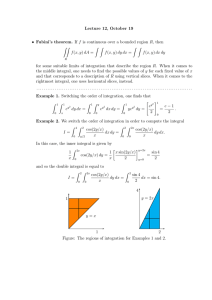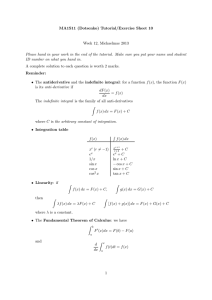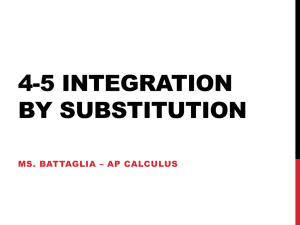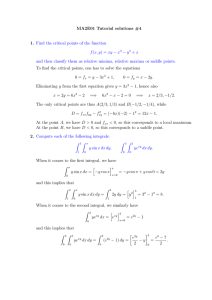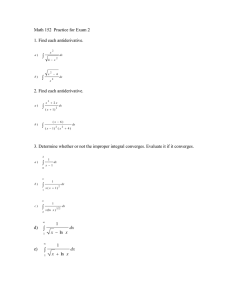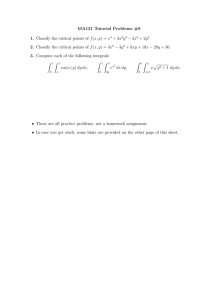7.3: Antidifferentiation (Integration )by Parts Proving the integration
advertisement
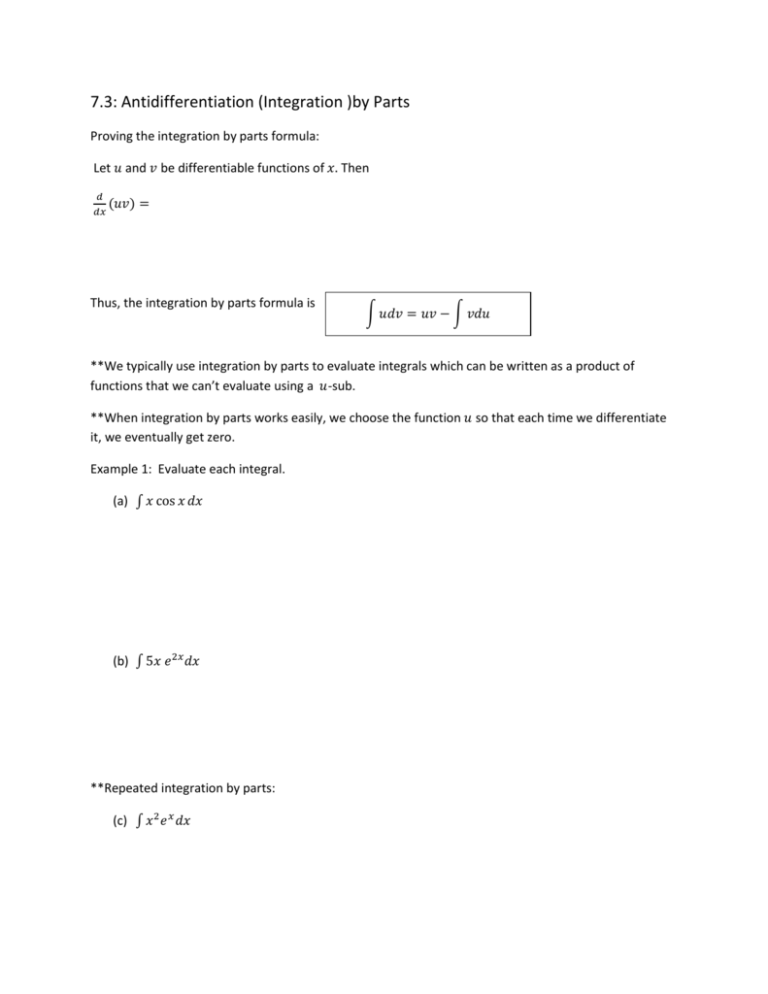
7.3: Antidifferentiation (Integration )by Parts Proving the integration by parts formula: Let 𝑢 and 𝑣 be differentiable functions of 𝑥. Then 𝑑 (𝑢𝑣) 𝑑𝑥 = Thus, the integration by parts formula is ∫ 𝑢𝑑𝑣 = 𝑢𝑣 − ∫ 𝑣𝑑𝑢 **We typically use integration by parts to evaluate integrals which can be written as a product of functions that we can’t evaluate using a 𝑢-sub. **When integration by parts works easily, we choose the function 𝑢 so that each time we differentiate it, we eventually get zero. Example 1: Evaluate each integral. (a) ∫ 𝑥 cos 𝑥 𝑑𝑥 (b) ∫ 5𝑥 𝑒 2𝑥 𝑑𝑥 **Repeated integration by parts: (c) ∫ 𝑥 2 𝑒 𝑥 𝑑𝑥 **Good news! Repeated integration by parts can be done using a table: (d) ∫ 5𝑥 4 sin 𝑥 𝑑𝑥 𝑢 and its derivatives 𝑑𝑣 and its integrals 𝑥4 sin 𝑥 4𝑥 3 − cos 𝑥 12𝑥 2 − sin 𝑥 24𝑥 cos 𝑥 24 sin 𝑥 0 − cos 𝑥 **After forming your table, form cross products of each result and alternate the signs starting with a positive value. **Integration by Parts where neither function reduces to zero upon differentiation These problems either can’t be solved or must be solved by solving the equation for an unknown integral. Any choice can be made for 𝒖 and 𝒅𝒗 however, do not switch your choice later in the problem! (e) ∫ 𝑒 𝑥 cos 𝑥 𝑑𝑥 ***Finding an antiderivative for ln 𝑥. This will prove that integration by parts can be applied to any type of integral. (However, it may not always work!) (f) ∫ ln 𝑥 𝑑𝑥 Add this result to your mental Calculus arsenal!!! 7.3 Assignment (Day 1): pg 350 1-10 (Hint for 9 and 10…you may need to make an atypical choice for 𝑢 and 𝑑𝑣) **Use tabular integration by parts only when more than one interation of IBPs is required



